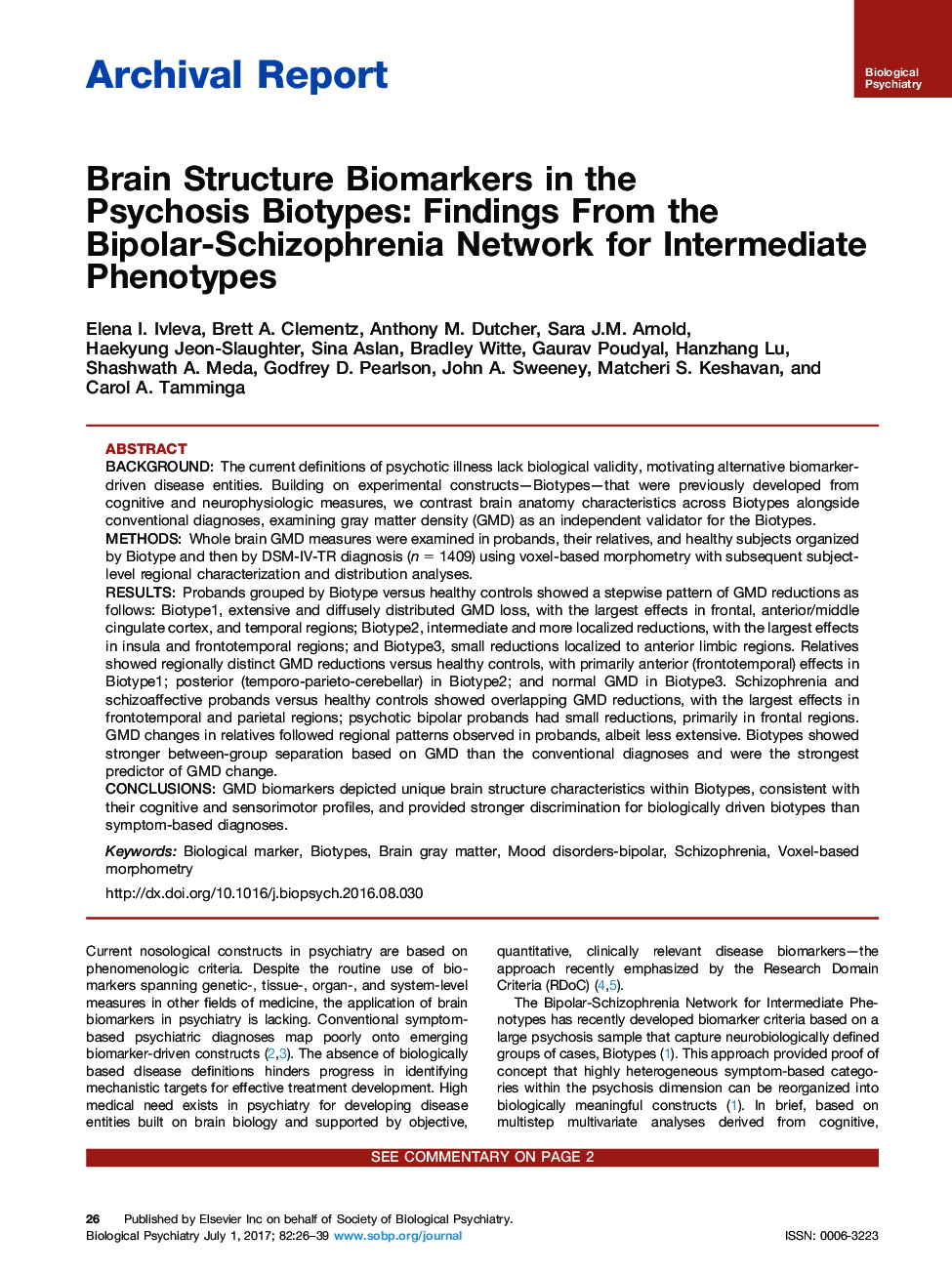| کد مقاله | کد نشریه | سال انتشار | مقاله انگلیسی | نسخه تمام متن |
|---|---|---|---|---|
| 5720815 | 1411330 | 2017 | 14 صفحه PDF | دانلود رایگان |
BackgroundThe current definitions of psychotic illness lack biological validity, motivating alternative biomarker-driven disease entities. Building on experimental constructs-Biotypes-that were previously developed from cognitive and neurophysiologic measures, we contrast brain anatomy characteristics across Biotypes alongside conventional diagnoses, examining gray matter density (GMD) as an independent validator for the Biotypes.MethodsWhole brain GMD measures were examined in probands, their relatives, and healthy subjects organized by Biotype and then by DSM-IV-TR diagnosis (n = 1409) using voxel-based morphometry with subsequent subject-level regional characterization and distribution analyses.ResultsProbands grouped by Biotype versus healthy controls showed a stepwise pattern of GMD reductions as follows: Biotype1, extensive and diffusely distributed GMD loss, with the largest effects in frontal, anterior/middle cingulate cortex, and temporal regions; Biotype2, intermediate and more localized reductions, with the largest effects in insula and frontotemporal regions; and Biotype3, small reductions localized to anterior limbic regions. Relatives showed regionally distinct GMD reductions versus healthy controls, with primarily anterior (frontotemporal) effects in Biotype1; posterior (temporo-parieto-cerebellar) in Biotype2; and normal GMD in Biotype3. Schizophrenia and schizoaffective probands versus healthy controls showed overlapping GMD reductions, with the largest effects in frontotemporal and parietal regions; psychotic bipolar probands had small reductions, primarily in frontal regions. GMD changes in relatives followed regional patterns observed in probands, albeit less extensive. Biotypes showed stronger between-group separation based on GMD than the conventional diagnoses and were the strongest predictor of GMD change.ConclusionsGMD biomarkers depicted unique brain structure characteristics within Biotypes, consistent with their cognitive and sensorimotor profiles, and provided stronger discrimination for biologically driven biotypes than symptom-based diagnoses.
Journal: Biological Psychiatry - Volume 82, Issue 1, 1 July 2017, Pages 26-39
